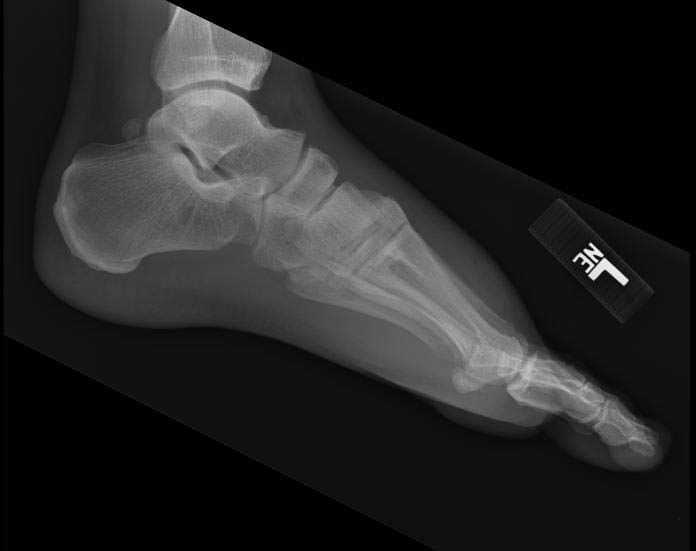Lisfranc fracture
| Lisfranc fracture | |
| eMedicine | orthoped/511 |
|---|---|
Please Take Over This Page and Apply to be Editor-In-Chief for this topic: There can be one or more than one Editor-In-Chief. You may also apply to be an Associate Editor-In-Chief of one of the subtopics below. Please mail us [1] to indicate your interest in serving either as an Editor-In-Chief of the entire topic or as an Associate Editor-In-Chief for a subtopic. Please be sure to attach your CV and or biographical sketch.
Overview
The Lisfranc fracture is a fracture and dislocation of the joints in the midfoot, where a cluster of small bones forms an arch on top of the foot between the ankle and the toes. From this cluster, five long bones, the metatarsals, extend until the toes.
History
The fracture was first described by the French doctor and surgeon Jacques Lisfranc de St. Martin, who worked in Napoleon's army.
Causes
This type of injury, which Lisfranc first described, occurred when a horseman fell while riding, having trapped his foot in the stirrup or fell into a drain. At present, such an injury happens typically when one steps into a hole and the foot twists heavily. Falling from a height of two or three stories can also cause this fracture. American football players occasionally get this injury, often when they have their foot pointing down and someone lands on their heel. Examples include New England Patriots defensive back Ty Law, who suffered this injury in October, 2004, and Indianapolis Colts defensive end Dwight Freeney, whose injury on November 11, 2007 ended his season. There are also other ways of receiving such an injury.
X-ray
Treatment
Treatment options include operative or non-operative treatment. If the dislocation is less than 2mm, the fracture can be managed with a POP(plaster of Paris) or dynacast for 6 weeks. The patient's injured limb cannot bear weight during this period. For operative treatment, percutaneous screws +/- k-wire will be used for internal fixation of the fracture. Again, the patient's injured limb cannot bear weight. The screws/k-wires must be removed before weight bearing.


